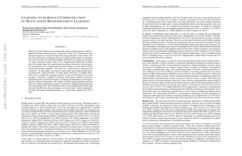Multi-modal Information Extraction from Text, Semi-structured, and Tabular Data on the Web
The World Wide Web contains vast quantities of textual information in several forms: unstructured text, template-based semi-structured webpages (which present data in key-value pairs and lists), and tables. Methods for extracting information from these sources and converting it to a structured form have been a target of research from the natural language processing (NLP), data mining, and database communities. While these researchers have largely separated extraction from web data into different problems based on the modality of the data, they have faced similar problems such as learning with limited labeled data, defining (or avoiding defining) ontologies, making use of prior knowledge, and scaling solutions to deal with the size of the Web. In this tutorial we take a holistic view toward information extraction, exploring the commonalities in the challenges and solutions developed to address these different forms of text. We will explore the approaches targeted at unstructured text that largely rely on learning syntactic or semantic textual patterns, approaches targeted at semi-structured documents that learn to identify structural patterns in the template, and approaches targeting web tables which rely heavily on entity linking and type information. While these different data modalities have largely been considered separately in the past, recent research has started taking a more inclusive approach toward textual extraction, in which the multiple signals offered by textual, layout, and visual clues are combined into a single extraction model made possible by new deep learning approaches. At the same time, trends within purely textual extraction have shifted toward full-document understanding rather than considering sentences as independent units. With this in mind, it is worth considering the information extraction problem as a whole to motivate solutions that harness textual semantics along with visual and semi-structured layout information. We will discuss these approaches and suggest avenues for future work.
PDF Abstract
